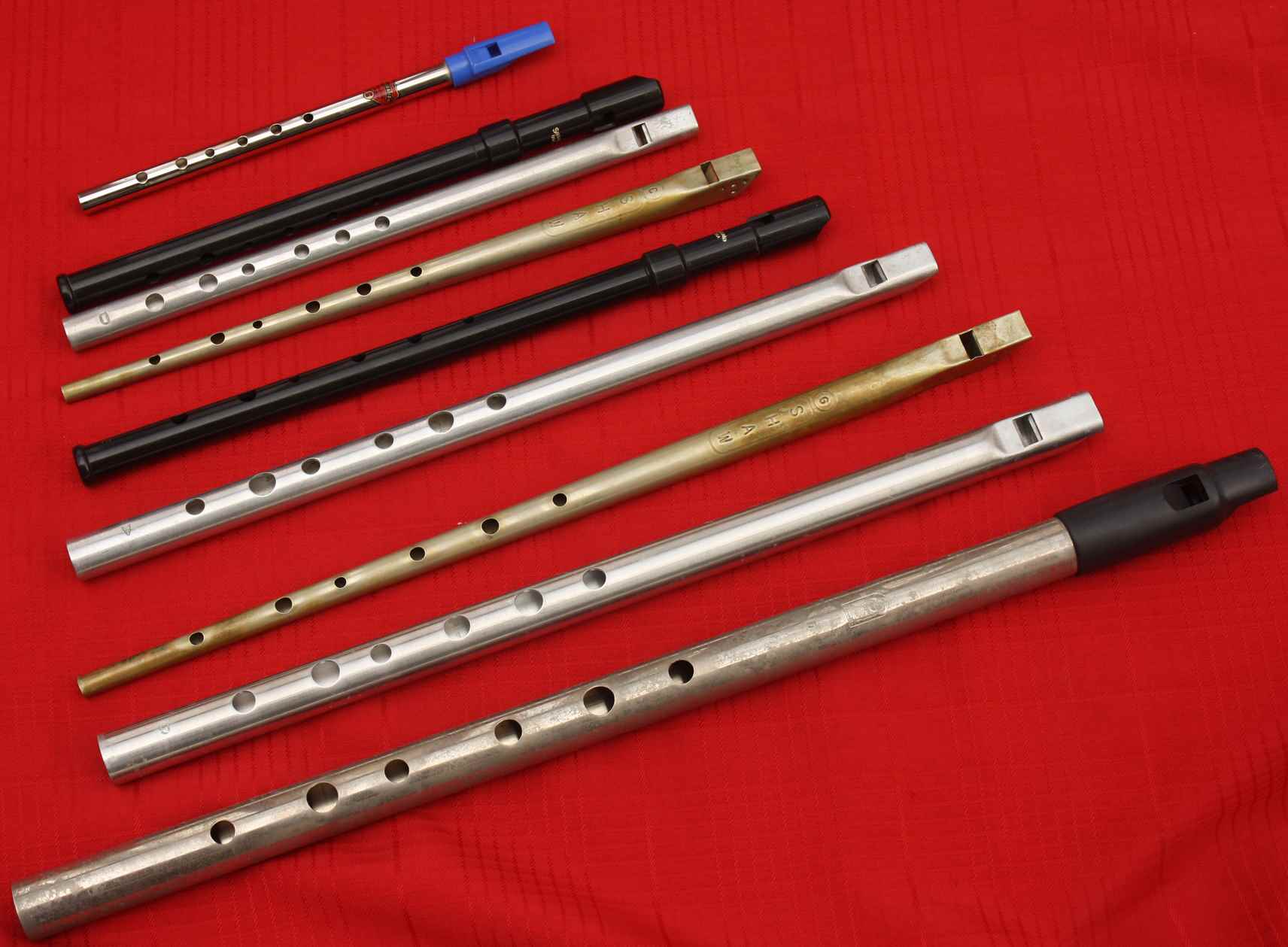I love to present my special program called ‘What Makes a Flute a Flute?’ to anyone, and I just did it this week with a group of third-graders. (I have a lot of different flutes to use for demonstrating this --- a lot!)
No one ever gets the right answer, though, till I tell them.
I usually play an Acme Thunderer sports whistle and explain that it’s a flute --- then I tell them that what makes a flute a flute is a sharp edge.
What? A sharp edge? Yes, indeed. To get any flute’s sound, you have to force air across a sharp edge so that it is split in half and creates a vibration that is a musical tone.
This is true for sports whistles, survival whistles, slide whistles, pennywhistles, recorders, Native American flutes, ocarinas, bamboo transverse flutes, quenas, shakuhachis, pan flutes, and silver concert flutes!
And Trophy Humanatone nose flutes.
Beyond that idea, though, most flutes are pipes.

Often, when I let someone try a pennywhistle or recorder, they put one finger at a time over the various holes to try to get different notes, as if it has buttons like a piano’s keys.
They never get more than one or two notes, and they always look puzzled. (Thousands of times I’ve seen this happen!)
The reality is that a flute doesn’t have buttons! Even a complicated concert flute is essentially a row of holes to make the pipe longer and shorter. It’s simply a pipe, and you get the different notes of the scale by covering first the hole closest to your mouth, then keeping that covered and adding the next hole, then keeping those two holes covered and adding a finger to the third hole, and thus making the closed part of the pipe longer and longer to get sound waves that are longer and longer, eventually going all the way down the scale.
To go back up the scale, you remove one finger at a time to make the pipe shorter and shorter. That’s what it’s all about!
To review: 1) A flute is a flute by forcing air across a sharp edge; and 2) a flute is a pipe, and you add and subtract fingers to get the different notes.
Now you know!





Comments